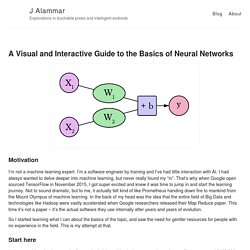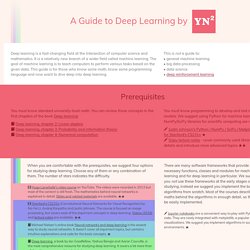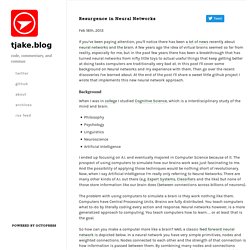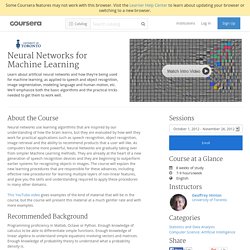

A Visual and Interactive Guide to the Basics of Neural Networks – J Alammar – Explorations in touchable pixels and intelligent androids. Motivation I’m not a machine learning expert.

I’m a software engineer by training and I’ve had little interaction with AI. I had always wanted to delve deeper into machine learning, but never really found my “in”. That’s why when Google open sourced TensorFlow in November 2015, I got super excited and knew it was time to jump in and start the learning journey. Not to sound dramatic, but to me, it actually felt kind of like Prometheus handing down fire to mankind from the Mount Olympus of machine learning. So I started learning what I can about the basics of the topic, and saw the need for gentler resources for people with no experience in the field.
Start here Let’s start with a simple example. It’s not easy to tell without a frame of reference. Personally, my first instinct would be to get the average price per sq ft. Welcome to your first neural network! Diagrams like this show you the structure of the network and how it calculates a prediction. This is a form of prediction. Automation. A Guide to Deep Learning by YerevaNN. When you are comfortable with the prerequisites, we suggest four options for studying deep learning.

Choose any of them or any combination of them. The number of stars indicates the difficulty. Hugo Larochelle's video course on YouTube. The videos were recorded in 2013 but most of the content is still fresh. The mathematics behind neural networks is explained in detail. There are many software frameworks that provide necessary functions, classes and modules for machine learning and for deep learning in particular. Jupyter notebooks are a convenient way to play with Python code. Distill — Distill. Курс «Машинное обучение» — Школа анализа данных. Resurgence in Neural Networks - tjake.blog. If you’ve been paying attention, you’ll notice there has been a lot of news recently about neural networks and the brain.

A few years ago the idea of virtual brains seemed so far from reality, especially for me, but in the past few years there has been a breakthrough that has turned neural networks from nifty little toys to actual useful things that keep getting better at doing tasks computers are traditionally very bad at. In this post I’ll cover some background on Neural networks and my experience with them. Then go over the recent discoveries I’ve learned about. At the end of the post I’ll share a sweet little github project I wrote that implements this new neural network approach. Background When I was in college I studied Cognitive Science, which is a interdisciplinary study of the mind and brain. PhilosophyPsychologyLinguisticsNeuroscienceArtificial Intelligence I ended up focusing on A.I. and eventually majored in Computer Science because of it.
Generative Machines. Machine learning in Python — scikit-learn 0.13 documentation. Neural Networks for Machine Learning. About the Course Neural networks use learning algorithms that are inspired by our understanding of how the brain learns, but they are evaluated by how well they work for practical applications such as speech recognition, object recognition, image retrieval and the ability to recommend products that a user will like.

As computers become more powerful, Neural Networks are gradually taking over from simpler Machine Learning methods. They are already at the heart of a new generation of speech recognition devices and they are beginning to outperform earlier systems for recognizing objects in images. The course will explain the new learning procedures that are responsible for these advances, including effective new proceduresr for learning multiple layers of non-linear features, and give you the skills and understanding required to apply these procedures in many other domains. Recommended Background Programming proficiency in Matlab, Octave or Python.
Course Format. UFLDL Tutorial - Ufldl. Neural Networks for Machine Learning. PyBrain.